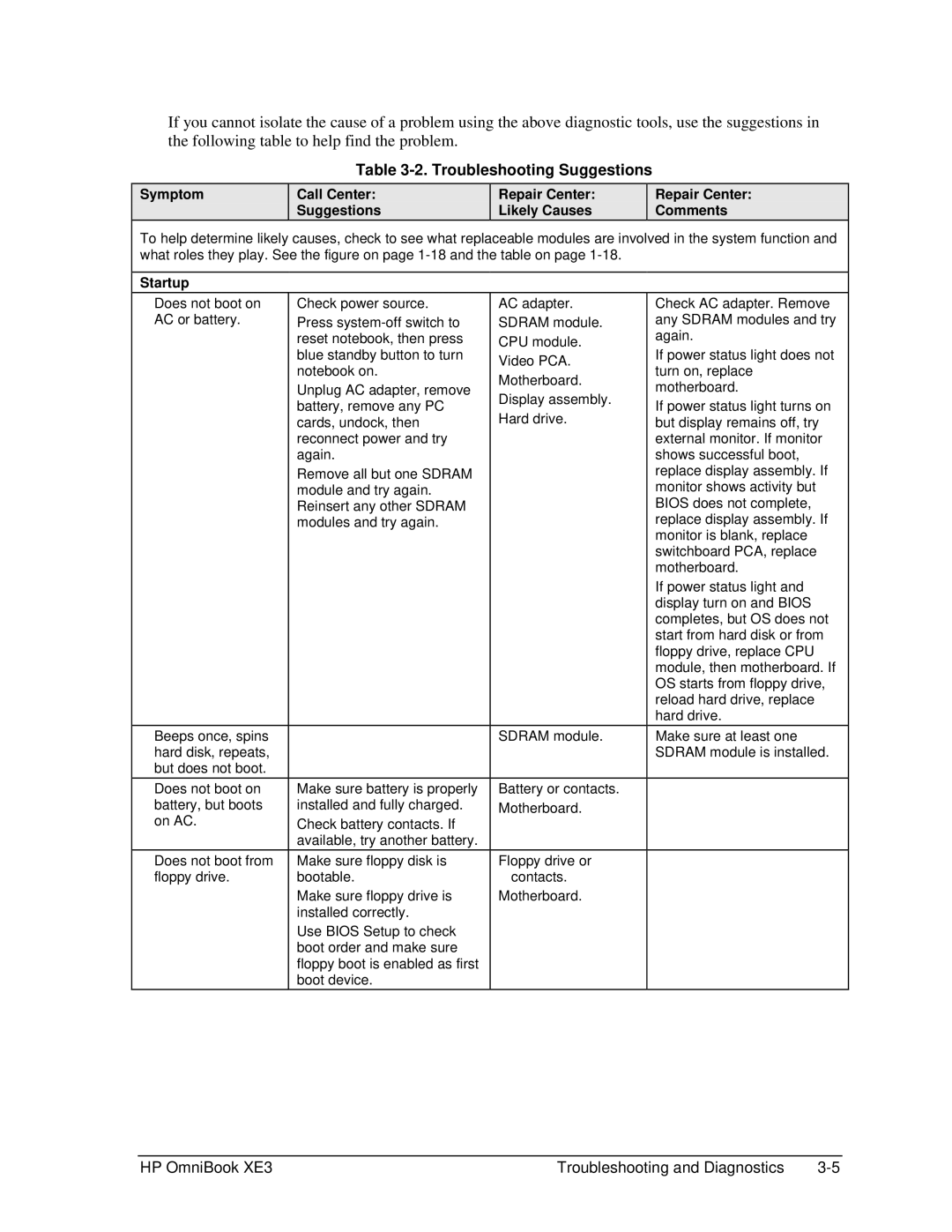
If you cannot isolate the cause of a problem using the above diagnostic tools, use the suggestions in the following table to help find the problem.
Symptom
Table 3-2. Troubleshooting Suggestions
Call Center: | Repair Center: | Repair Center: |
Suggestions | Likely Causes | Comments |
To help determine likely causes, check to see what replaceable modules are involved in the system function and what roles they play. See the figure on page
Startup
Does not boot on AC or battery.
Beeps once, spins hard disk, repeats, but does not boot.
Check power source.
Press
Unplug AC adapter, remove battery, remove any PC cards, undock, then reconnect power and try again.
Remove all but one SDRAM module and try again. Reinsert any other SDRAM modules and try again.
AC adapter. SDRAM module. CPU module. Video PCA. Motherboard. Display assembly. Hard drive.
SDRAM module.
Check AC adapter. Remove any SDRAM modules and try again.
If power status light does not turn on, replace motherboard.
If power status light turns on but display remains off, try external monitor. If monitor shows successful boot, replace display assembly. If monitor shows activity but BIOS does not complete, replace display assembly. If monitor is blank, replace switchboard PCA, replace motherboard.
If power status light and display turn on and BIOS completes, but OS does not start from hard disk or from floppy drive, replace CPU module, then motherboard. If OS starts from floppy drive, reload hard drive, replace hard drive.
Make sure at least one SDRAM module is installed.
Does not boot on battery, but boots on AC.
Does not boot from floppy drive.
Make sure battery is properly installed and fully charged.
Check battery contacts. If available, try another battery.
Make sure floppy disk is bootable.
Make sure floppy drive is installed correctly.
Use BIOS Setup to check boot order and make sure floppy boot is enabled as first boot device.
Battery or contacts. Motherboard.
Floppy drive or contacts.
Motherboard.
HP OmniBook XE3 | Troubleshooting and Diagnostics |
